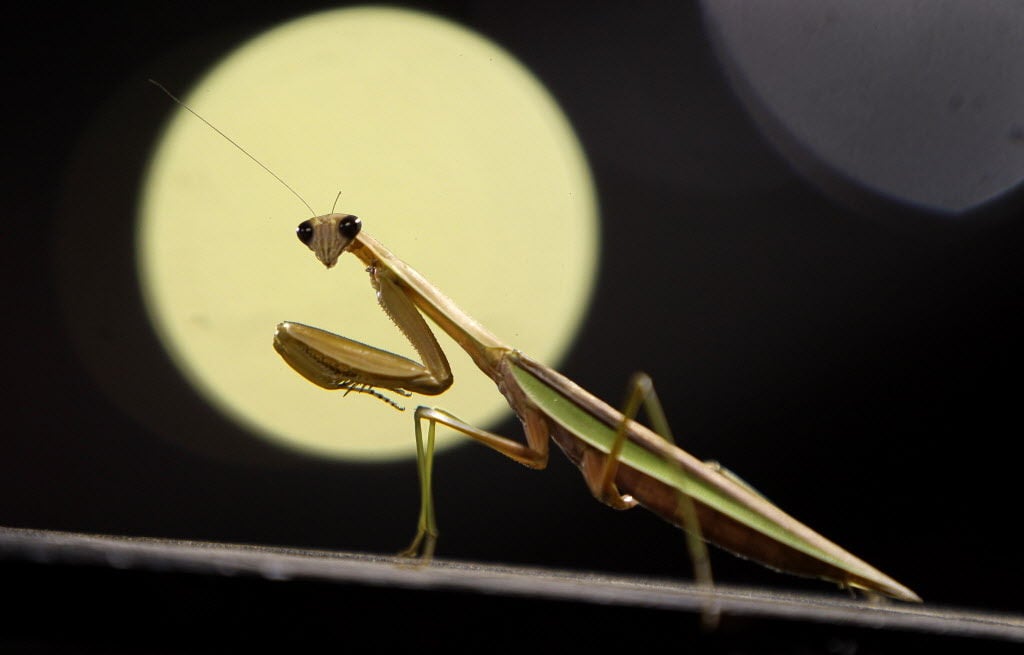Q: Can you tell me about the cute praying mantis that has been on our sesame plant for several months now.
A: Praying mantids are highly predacious and feed on a variety of insects, including moths, crickets, grasshoppers and flies. They lie in wait with the front legs in an upraised position. They intently watch and stalk their prey. They will eat each other. Praying mantids are often protectively colored to the plants they live on. This camouflage facilitates their predaceous behavior. Mantids are usually found on plants that have other insects around. Some mantids live in grass. Winged adults may be attracted to black lights in late summer and early fall.
Many fish and predatory aquatic insects eat larvae and pupae. Bats, birds and spiders eat flying adults. The adult female usually eats the male after or during mating. Mantids have a grasping response that is incredibly rapid, so that you see it before it catches the insect and when the insect is in its front legs. The motion is barely a blur if it is perceived at all. Mantids are active predators and consume other insects.
They are good garden predators, but are cannot keep up with the population growth of some insect populations and do not discriminate between beneficial and harmful garden insects.
Peter L. Warren is the urban horticulture agent for the Pima County Cooperative Extension and the University of Arizona. Questions may be emailed to plwarren@cals.arizona.edu





